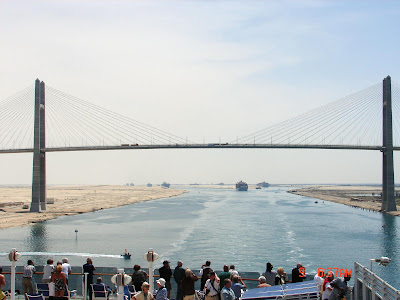The Familia Cathedral in Barcelona has to be one of Europe's most photographed sites and was the first place we visited. It has been under construction since 1882 and and was the work architect Antonio Gaudi devoted most of his life to. It is expected to be finished by 2026. It is owned by a private foundation that easily funds construction from admission fees and private donations.


Barcelona is definitely a city we would like to visit again. It is clean with wide boulevards and pedestrian walkways similar in some respects to Paris.
If the British Empire dominated the middle and far east, then the Romans dominated Mediterranean countries and cities and Barcelona is one of them.
Architect Gaudi's influence and work is seen everywhere, well beyond the Familia Cathedral. His implementation of nature and curves and angles can be seen in this downtown building. Of course he was praised and ridiculed at the same time.


Barcelona is famous for the zillion balconies on their city apartments dating back many centuries and residents make use of them, like this girl getting her morning fix from a drag on her cigarette. Little did she know someone in the passing bus found her to be a worthy photo topic!
BUT...the best of all we didn't capture on our camera. As the bus toured the downtown city streets and our guide talked, we were looking left, right and up and down when suddenly I yelled to Phyllis (sitting next to me) "He's naked" and fortunately she caught a glimpse of this hairy macho Spaniard standing in his 2nd story window breathing in the Barcelona morning air and posing for all to see!! That's a first.

One of the highlights of our tour of Barcelona was a stop at 3 tapas restaurants to sample a few tapas and wine. You can see them being made in the photo. Bigger than hors d'ouvres, smaller than sandwiches.
 This was our second visit to Lisbon and we opted for an overview bus tour and an hour and half boat ride to see the city from the Tagus River.
This was our second visit to Lisbon and we opted for an overview bus tour and an hour and half boat ride to see the city from the Tagus River. Because the Queen Victoria was not leaving the port until midnight, we took advantage of the opportunity to have a fine meal at one of their many seafood restaurants not far from our ship.
Because the Queen Victoria was not leaving the port until midnight, we took advantage of the opportunity to have a fine meal at one of their many seafood restaurants not far from our ship.

















































